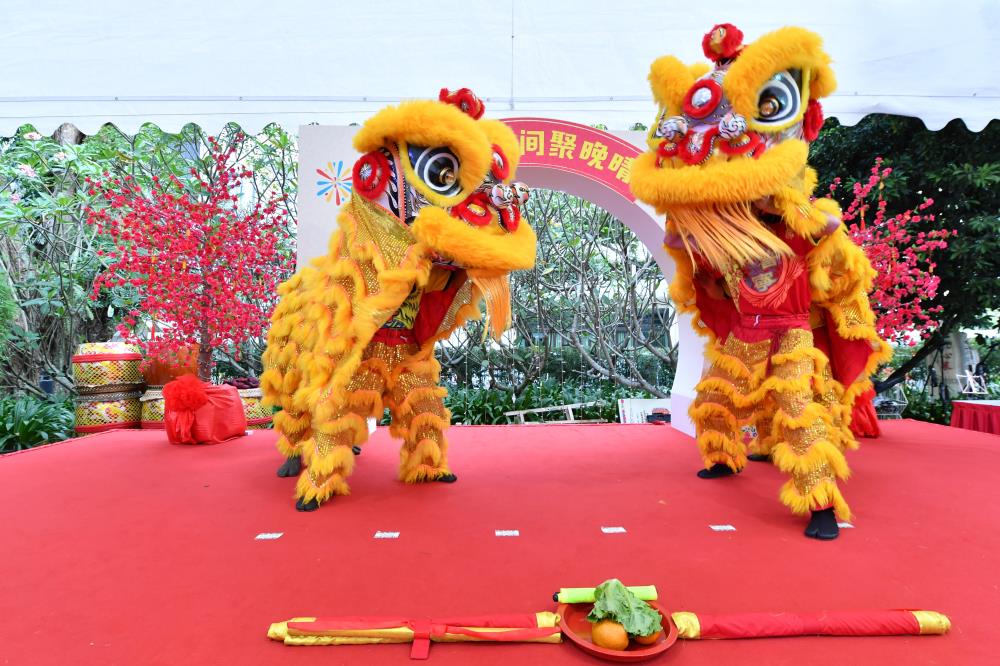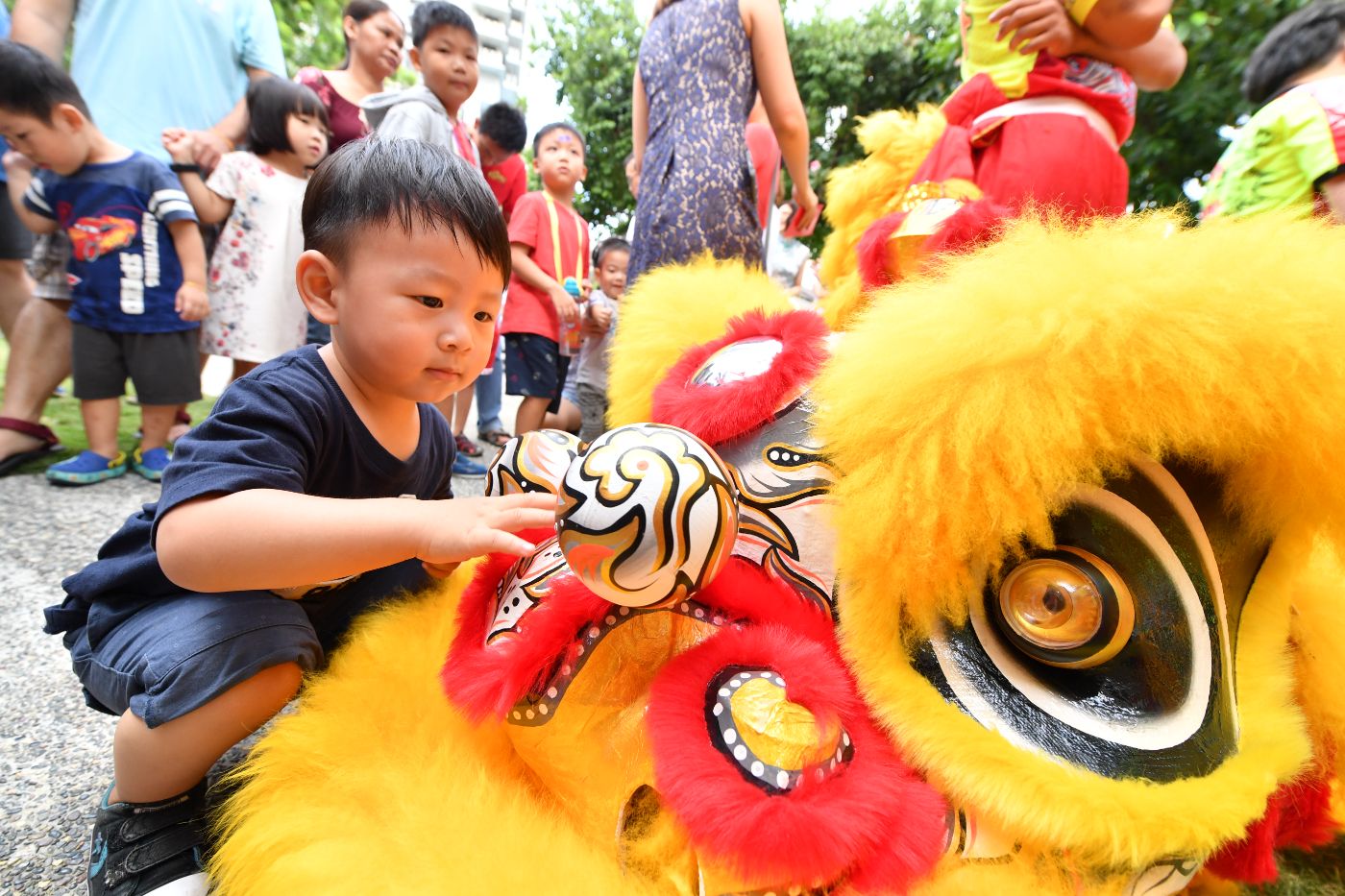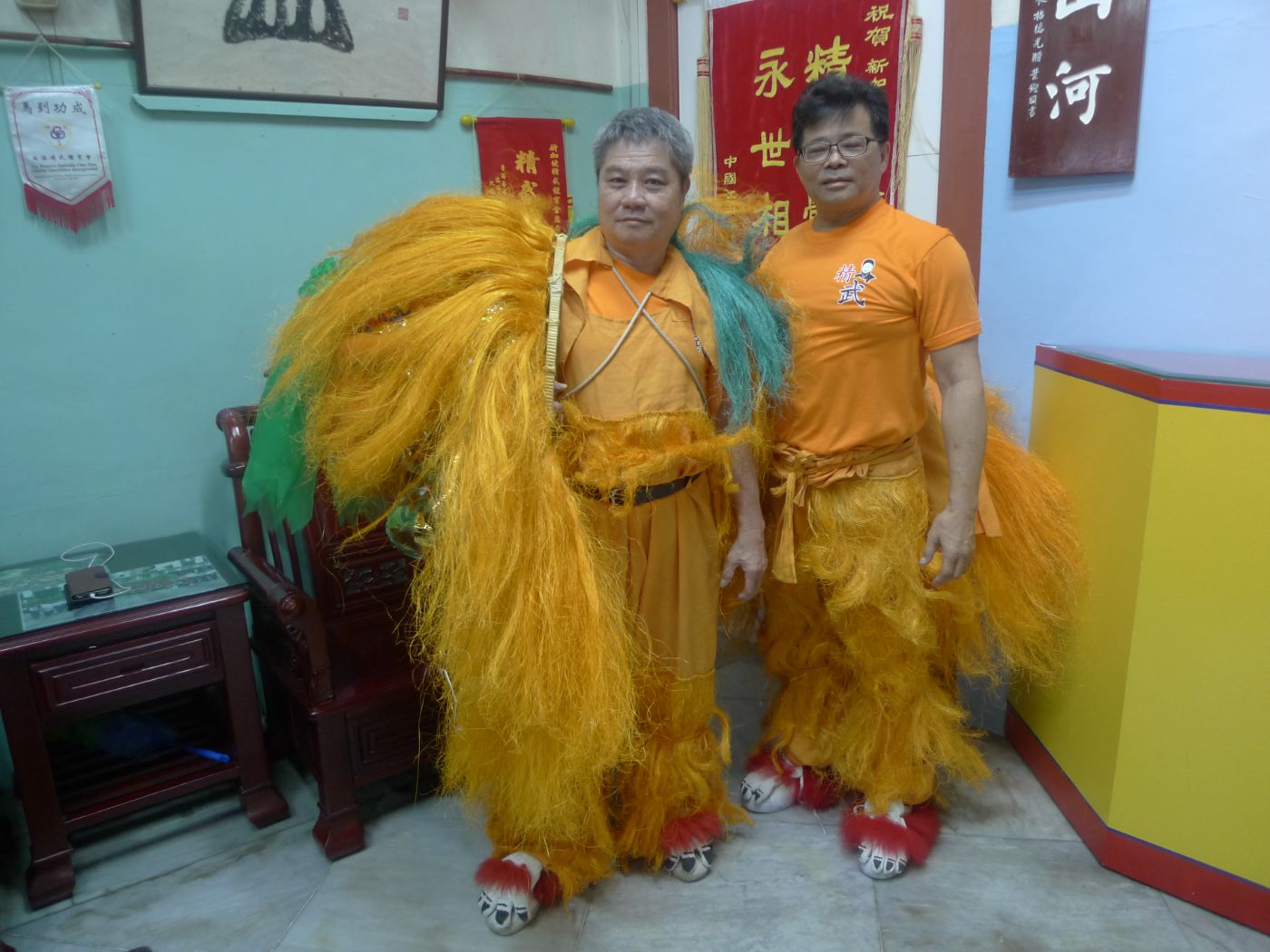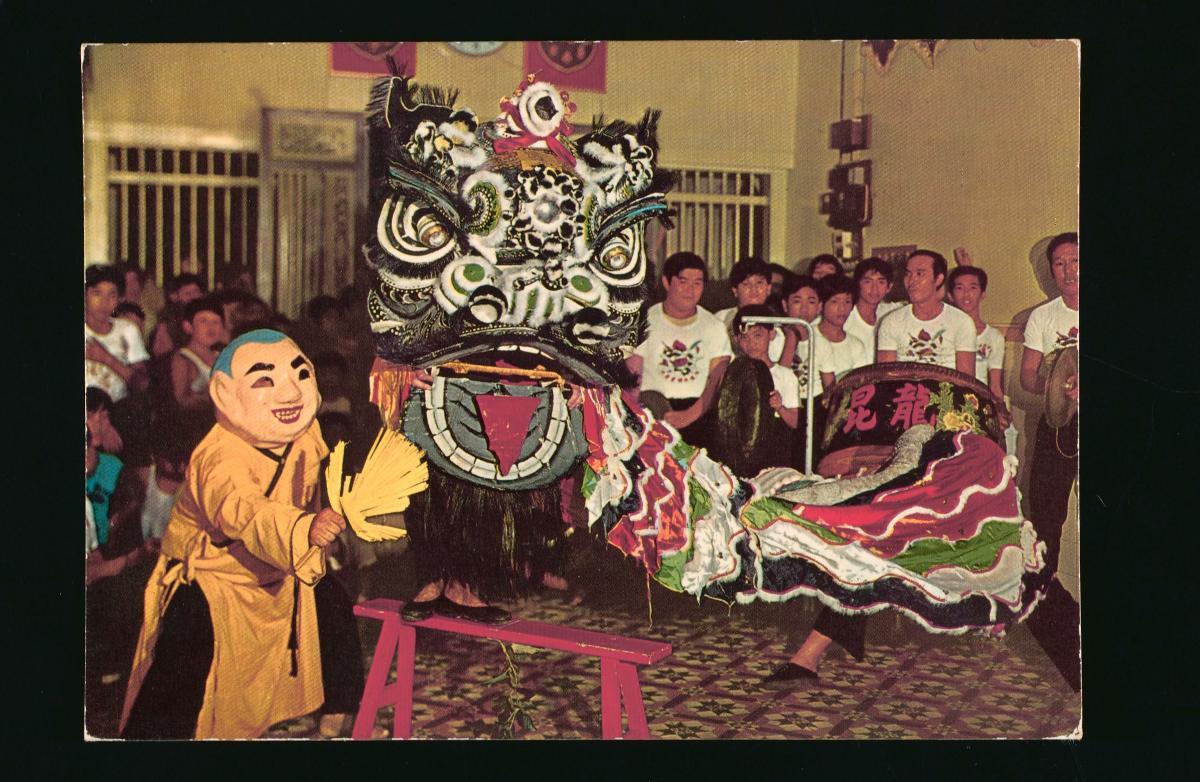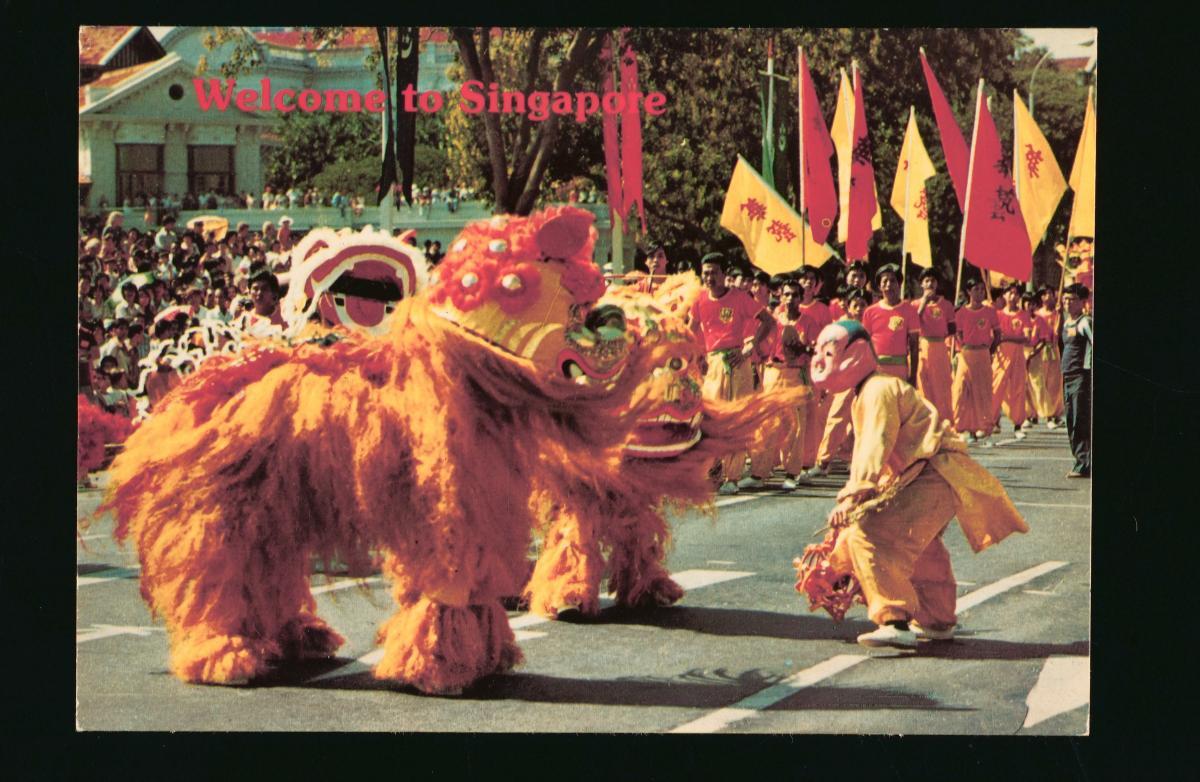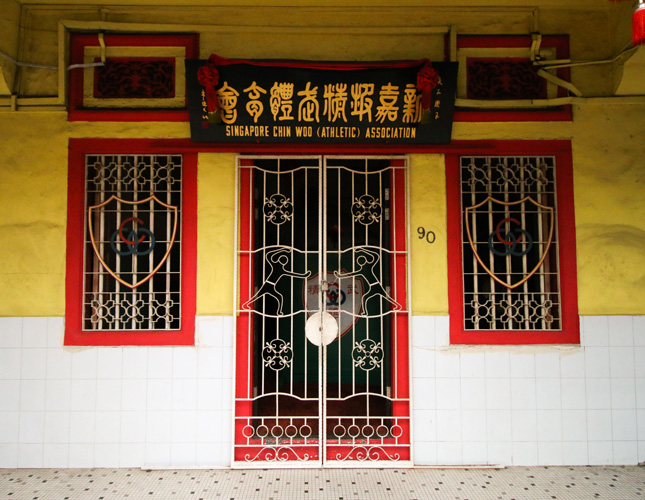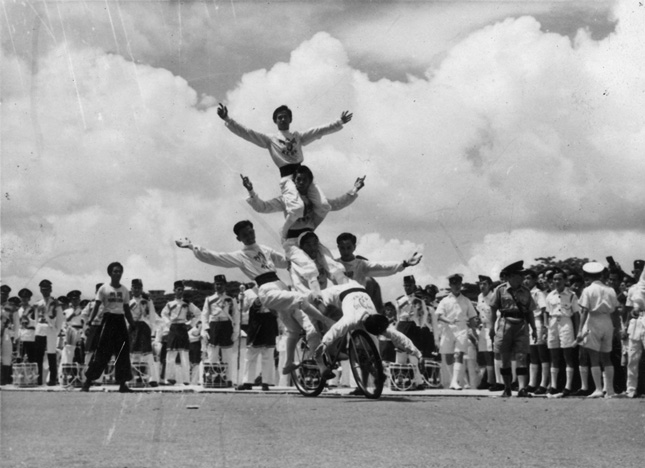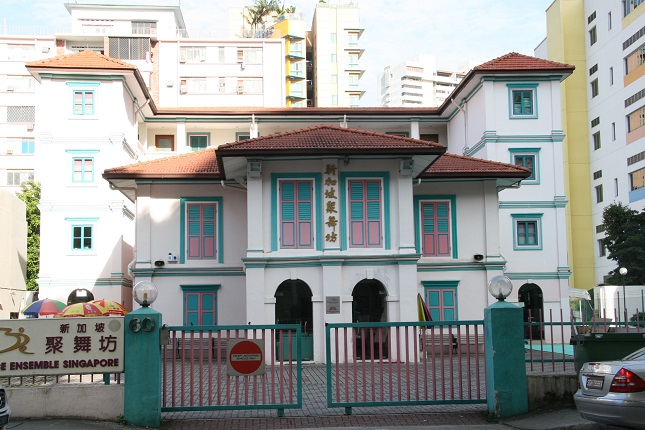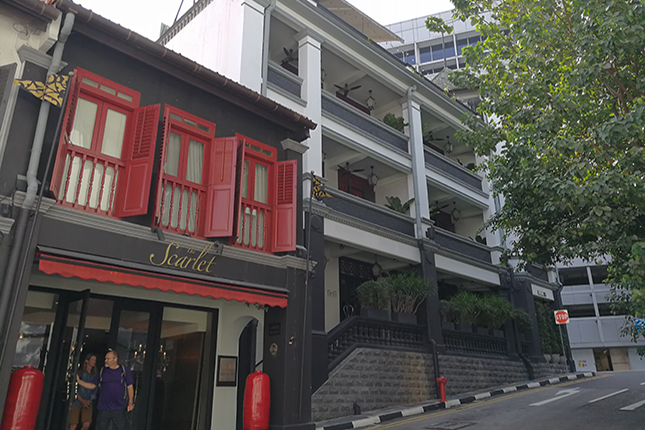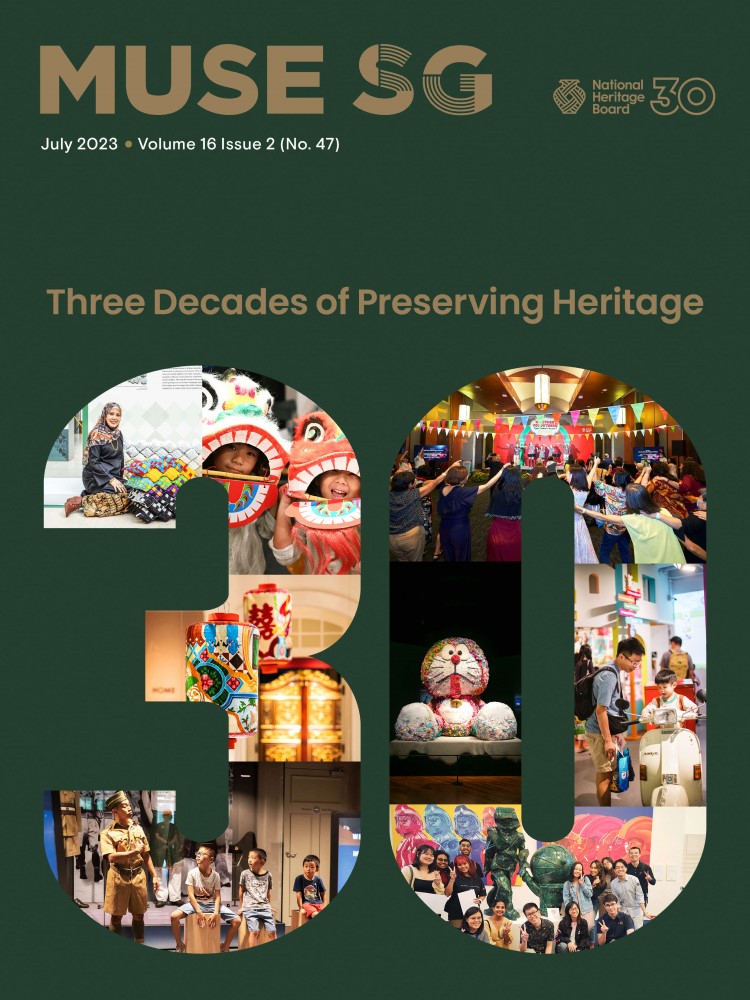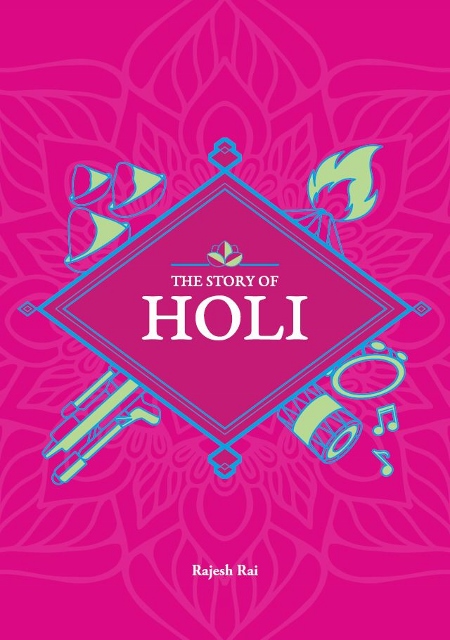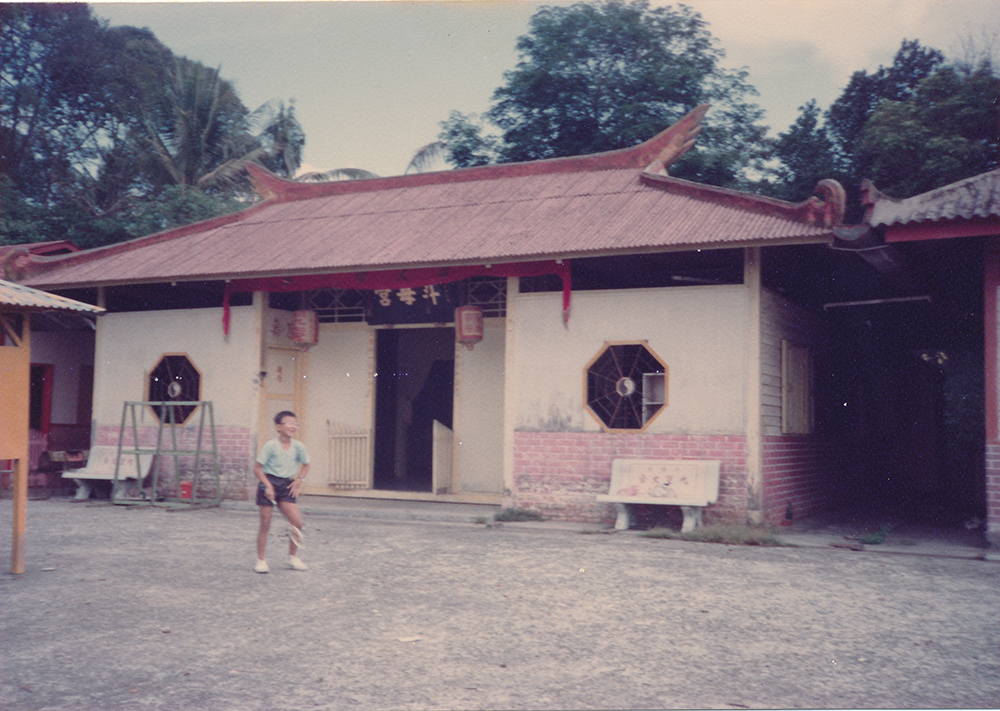Lion Dance
Lion dance performances are a common sight in Singapore during Chinese New Year and other Chinese cultural and religious festivals, as they are believed to be bearers of good luck.
Believed to be a pugilistic performance dating back more than 1,500 years in China, lion dance involves performers clad in the lion dance costume, accompanied by rhythmic beats of drums, gongs, and cymbals.
There are two main types of lion dances — the northern lion dance and the southern lion dance. The former originated from North China and was commonly performed in festivals during the Southern Song Dynasty. The latter was developed much later in the Guangdong province in South China.
Geographic Location
There are lion dance troupes in various parts of the world including Malaysia, China, Hong Kong, Taiwan, Thailand, the United Kingdom and Canada.
In Singapore, lion dance is performed at public spaces such as neighbourhood hubs and community centres during Chinese New Year, and is also common at shopping malls during opening ceremonies or celebratory festivals.
Communities Involved
The lion dance community in Singapore is closely-knitted with strong networks, and troupes usually help each other out when there are manpower shortages. Many of these lion dance troupes are registered as affiliated members with the Singapore Wushu Dragon and Lion Dance Federation.
During the early days, lion dance troupes in Singapore were formed by immigrants and clansmen from China provinces. The troupes have increasingly attracted multi-ethnic members through the years.
Lion dance performances are usually coached by masters who have acquired sufficient skill, experience and knowledge through years of practice. The masters are assisted by their senior disciples. The learners are generally students, national servicemen and young male and female alike who have strong interest in lion dance and martial arts.
Associated Social and Cultural Practices
The bei shi (北狮) or northern lion tends to sport red or golden fur, and a performance usually has two lions (played by two performers each), led by a character known as shao xia (少侠) who may narrate the play of the lions. In contrast, the nan shi (南狮) or southern lion involves only one lion. Southern lion is also known as xing shi (醒狮). The word 醒 (xing) means “awakened” and is deemed auspicious. Before a lion makes its first performance, a ceremony known as “dotting the eyes” (点睛), to symbolise giving life to the lion, is arranged. A person of significant social standing would usually be invited to dot the lion eyes to signify bright and clear vision.
The lion dance performance also involves a routine known as cai qing or “plucking the green”, associated with the themes of fortune, wealth and prosperity.
This involves the acrobatic act of “plucking” a green vegetable that is suspended from a height. Getting these “treasures” from the mouth of a lion symbolises the attainment of good fortune.
Experience of a Practitioner
Mr Lim Soin Khoon is a lion dance instructor at the Singapore Chin Woo Athletic Association. Carrying the lion’s 2kg head and executing dangerous leaps over high poles while making it look elegant is not easy, and a great deal of hard work goes into the training, says Mr Lim. A beginner starts off with drumming skills and basic footwork. He also picks up martial arts to build up his stamina.
Intermediate students learn the techniques of cai qing for the southern lion dance, and how to do jumps and somersaults. At the advanced level, props like cai qiu (彩球) (a huge 2 – 3metres coloured ball) and see-saws are added for both lion dance styles. Learning to balance and roll on the cai qiu took Mr Lim about two years to master.
The heavy northern lion costume does not make the training easier. It can take a lion dancer up to 10 years to master the whole programme.
Present Status
Lion dance troupes in Singapore, while holding fast to traditional techniques, are open to making changes and innovations to keep up with the times. For instance, Chin Woo Athletic Association has made improvements to the design of the lion costumes to ease dancers’ movements. They also reduced repetitive actions and performed shortened routines of seven minutes to hold the audience’s interest. These days, the use of video technology to complement the traditional methods of demonstration is also common. Lion dance troupes also use social media, websites, blogs, and Facebook to broadcast their activities to the community. There are also various lion dance competitions in Singapore that continue to attract the participation of many different troupes.
However, there are several challenges faced by lion dance troupes in the community today. For instance, it is hard to get locally-designed lion heads and costumes, with Mr Henry Ng being one of the last few remaining lion dance costume makers in Singapore. Also, some members of the public are less tolerant towards the loud sounds coming from lion dances during practices and performances, says Mr Lim.
Nevertheless, the complexity of the skills and freedom of expression are factors that prove to be attractive to youth. In Singapore, lion dance troupes even have young Indian and Malay members now. The continuation of such trends may lead to greater ethnic diversity in lion dance performances in the future.
References
Reference Number: ICH- 016
Date of Inclusion to Inventory: April 2018; Updated March 2019
References
Kuan San Tang Dragon and Lion Dance Troupe. “About Team KST.” http://www.teamkst.sg/. Accessed 7 January 2017.
Xinyang and Yongyang Athletic Association. “About Xinyang & Yongyang Athletic Association.” http://www.xinyang.com.sg/aboutxinyang. Accessed 7 January 2017.
Kong Chow Wui Koon. “冈州会馆一百七十五周年纪念特刊 (Kong Chow Wui Koon 175 Years Anniversary Special Issue)”, Singapore Kong Chow Wui Koon Publishing, 2009.
Koh, Fabian. “Roaring interest in lion dance.” The Straits Times, 20 November 2016.
Mo Cuiyu. The Cantonese lion head: the process of making a lion head in Guangzhou. (Thesis). University of Hong Kong, Pokfulam, Hong Kong SAR, 2013, p.25. http://dx.doi.org/10.5353/th_b5071629. Accessed 7 January 2017.
Singapore Wushu Dragon and Lion Dance Federation. “Southern lion classification.” http://www.wuzong.com/en/wushi_nanshixingte.php. Accessed 5 January 2017.
Singapore Chin Woo Athletic Association. “关于新加坡精武体育会” (About Us) http://www.sgchinwoo.com/Home. Accessed 7 January 2017.




